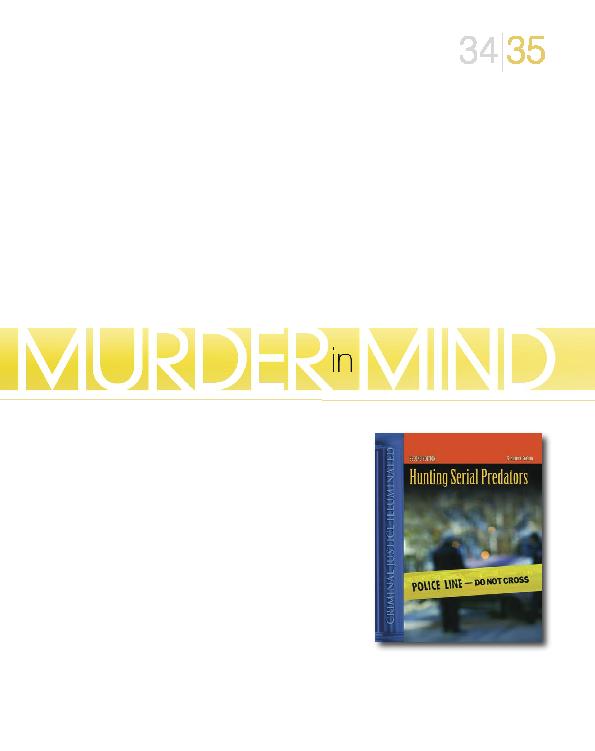
Psychology 1998) had
always been interested in
criminal behaviour. But it
was a chance viewing of a
documentary featuring the
and `Cracker' style psychologist,
Professor David Canter, that propelled
him to the UK and a successful
career in psychology.
force, I went back into education to
then a Masters in Criminology. I'd been
working as a college lecturer but then
drifted into something completely
unrelated to my academic studies.
inspired by Professor Canter and his
pioneering work in investigative psychology,
which was like nothing I'd studied before.
I realised I'd found what I wanted to do."
Applied Psychology PhD programme. While
studying he developed an interest in
geographical profiling, and began
researching theories that eventually led
to the development of the innovative
Predator software.
Godwin Trial and Forensic Consultancy,
which specialises in assisting defence
Much of his work involves crime scene
reconstruction and geographical profiling.
similar routes when carrying out crimes to
those they use in their everyday life,"
explains Maurice. "It involves analysing
important sites from an investigation
usually places where bodies or important
clues have been found and creating a
map that can be used to predict the
offender's location.
places of work, but as they get more
confident, the crimes get closer to home.
area on a map, with a high probability that
the offender will live or work close to the
narrow end of the wedge."
case Dru Sjodin, a young woman who
had disappeared in Minnesota. Instead of
using `dump sites' to predict the location of
the perpetrator, Maurice used the abduction
site and other geographical information to
pinpoint where Dru's body might be found.
He was accurate to within one mile
impressive considering the 3,000 square
mile search site.
in a number of high-profile murder and
missing person cases in the US. He
lectures across the world on subjects as
diverse as cyber stalking and crime scene
behaviour, and has written four books on
profiling and serial murder and numerous
a high media profile, acting as consultant
to CNN during their coverage of the
Washington DC sniper case in 2002.
He not only successfully predicted that
there were two snipers, but also the
location of one of the shootings and the
home/work base of the offenders.
Graham Wagstaff and to be using their
ground-breaking theories in my own work,"
says Maurice. "It's all about finding
evidence that others miss, and my time
at Liverpool has given me the tools
to do that."